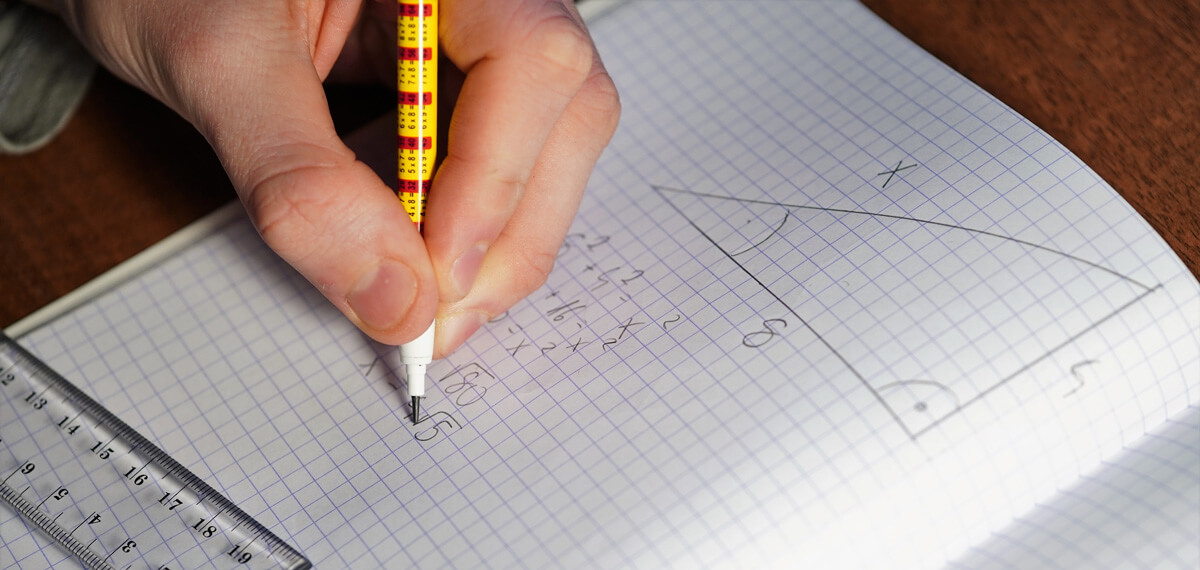
You’ve probably heard students say they can’t do math or hate math class. People laugh about being bad at math so often that it’s become a socially acceptable joke. But it isn’t funny at all. Math anxiety causes problems for students that can follow them throughout their school careers.
“Students who experience math anxiety believe they cannot learn math. Once students buy into that idea, it becomes a self-fulfilling prophecy,” according to Julia Narrell, Professional School Counselor at South Middle School in Joplin, MO. Even if students understand a concept, they may freeze when asked to apply the knowledge. Narrell noted that many students accept they’ll never be good at math and give up any motivation to try.
It’s important to remember that math anxiety is not limited to kids who struggle with math. Nicole Peters, an 8th-grade math and Algebra 1 teacher also from Joplin, MO, says advanced students feel it, too. “I work as a cheerleader to build up those who struggle and bring problems to advanced students that force them to think deeper. While rote memorization of math facts and steps in a process is important, students need to move beyond those and into conceptual understanding.”
Both agree that the trick is getting kids to realize they can succeed in math. But first, teachers need to understand and acknowledge that math anxiety is a fact of life in the classroom for some students.
What’s the difference between math anxiety and feeling nervous?
We all experience nervousness from time to time. Public speaking and testing situations may bring those jitters to the surface. However, math anxiety is very different. Researchers believe that working memory, the part of the brain needed to complete tasks, becomes overpowered in people with math anxiety, causing a sense of panic. Because of that inability to concentrate and sense of helplessness, some kids will try avoidance techniques, such as absences on test days or shutting down in class.
Students may fear judgment from peers if they work slower than other classmates, making it difficult to recognize progress as they tackle problems. There are many physical effects as well. Common symptoms include increased heart rate, sweating, tension, dizziness, headaches, and nausea. In more severe cases, students may experience full-blown panic attacks.

Ways to ease math anxiety
“Part of math is learning the process and having confidence in yourself rather than focusing on one solution,” noted Narrell. She reminds students who come to her office with concerns about math anxiety to think rationally because irrational thoughts increase their fears. “I tell them that the incorrect messages your mind is feeding you right now are coming from your anxiety,” Narrell said. “Deep breathing is a simple technique to calm those irrational thoughts.”
Peters strives to show her students how to be successful in a safe place. “It’s important to normalize asking for help in class,” said Peters. “I encourage students to tutor BEFORE a test to feel more prepared and comfortable.”
There are actions to take to ease math anxiety! Take a look.
- Allow students to share different ways of attacking problems.
- Make sure students feel comfortable with math terms.
- Encourage them to explain concepts to parents and practice at home.
- Change your language; for example, Peters refers to tests as “Celebrations of Knowledge.”
- Bring fun math activities to students that seem less stressful.
- Practice with online games.
- Use art and writing skills to work through negative emotions.
- Remind students to take the time they need to solve problems regardless of who finishes first or last.
- Prompt students to go back and relearn unclear material because math concepts build on previous learning.
- Teach students how to create mnemonic devices, such as PEMDAS, for remembering processes.
- Set up trial testing experiences with a few problems and a quiet environment to practice without the stress of grading.
- Use manipulatives whenever possible to help students visualize concepts.
- Model how to replace negative self-talk with positive affirmations.
Download the Steps to Ease Math Anxiety
“Math anxiety adds a lot of pressure to students,” said Narrell. “Make sure they know it is safe to ask questions and share concerns with you.” Students dealing with math anxiety must change the narrative, and teachers play a vital role in that script.
Allow your students a chance to practice independently and boost math confidence with our research-based activities.
Sign up to get the latest updates from ExploreLearning via occasional email.
